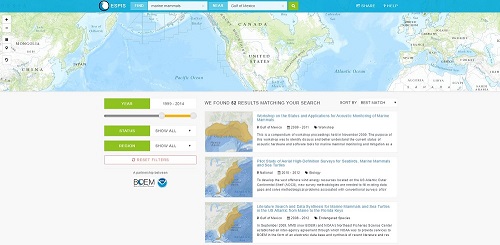08-27-2015
For BOEM, making informed decisions based on science relies on the ability to readily discover relevant scientific information and data analyses. Using the latest geospatial science and database technology, BOEM has reinvented the Environmental Studies Program Information System (ESPIS) to streamline the search, discovery and retrieval of more than 40 years of environmental science. We partnered with NOAA's Office for Coastal Management to design and host the new ESPIS, building on the success of another BOEM/NOAA partnership, MarineCadastre.gov.
This innovation aligns BOEM with the federal government’s move toward greater interoperability and openness of government research data and the building of a 21st Century digital government.
BOEM and others who are preparing environmental reviews to comply with NEPA will find study reports with more precision by searching expanded metadata of BOEM-funded ocean research. Regional Planning Bodies can geo-reference study data more easily. Industry, academia and the NGO community will find archived study results from past decades to compare with the latest BOEM research.
Enhanced search tools enable users to submit text and map-based queries to find relevant study information, including downloadable electronic documents of study profiles, technical summaries and final reports, and links to associated publications and digital data.

Sample search results for BOEM-funded environmental studies. This search covered marine mammals
from 2000-2014 in all OCS regions, and found 52 studies with marine mammals in the title, the best match.
The user has the option to search for studies using the map to conduct spatial searches or text based searches.
Users may ascertain the location of studies by viewing thumbnail images of the study footprints.
Tools on the left side enable additional filtering by date, region and status of the research
New systems architecture leverages MarineCadastre.gov's GIS infrastructure and BOEM/BSEE's Electronic Document Management System. This robust web service-based architecture exponentially multiplies access to the ESPIS online database and its supporting data and information across the Internet.
Please take a few minutes to try out the new ESPIS and tell us what you think. We especially welcome input as to how we can make our science more useful and available to the ocean science community through the use of this tool, in addition to any functionality-related changes that may be needed to accommodate your search preferences. Please contact us at espis@boem.gov if you have any suggestions, questions or feedback.
Dr. Rodney E. Cluck
Department of the Interior
Bureau of Ocean Energy Management
Chief, Division of Environmental Sciences
